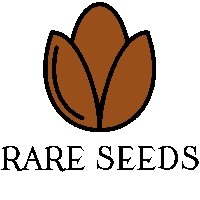A Guide To Soilless Growing Mediums
Topics
Growing cannabis in soil is an excellent choice for traditional or organic growers. However, for many, soilless mediums offer an attractive, mess-free alternative. They make growing easier and provide several benefits. Notably, they offer better air circulation to roots. Plants transfer with minimum fuss. Additionally, they store moisture and nutrients well. Let's explore various soilless options, with their pros and cons.
Coco Coir is made from coconut husks. It is a popular soilless medium. It works alone or mixed with others for improved root airflow. The coconut fibres excel at storing water and nutrients. Despite moisture retention, they resist bacteria and mould. This eco-friendly, renewable medium is nutrient-rich. The PH balance is ideal for cannabis, making it perfect for beginners experimenting with soilless growth.
Rockwool is widely used and known for water retention. It allows air access to roots. This porous, inert, sterile, and non-degradable medium supports roots during growth. It facilitates oxygen intake. Rockwool, often found in cubes, supports seedlings as they grow.
Vermiculite is a soft, spongy medium that mixes well with others. It creates an excellent growing environment. Known for water retention, it assists clones in developing strong roots. It provides nutrients, containing aluminium, silicon, phosphorus, and magnesium. These elements are vital for healthy plants. Ensure to get plant-specific vermiculite to avoid harmful chemicals.
Peat Moss was once a widely used medium. It retains significant moisture, suitable for hydroponic setups. Roots draw nutrients directly from the reservoir. Peat Moss is high in fibre and has an ideal PH level for cannabis.
Perlite is perfect for those concerned about root rot. It drains quickly, preventing root submersion in moisture. However, it cannot buffer alone and is usually mixed with other mediums. It can also be used in soil to improve root aeration.
Expanded Clay is a reusable growing medium. Once used, it can be cleaned and reused, being eco-friendly. Expanded clay consists of small pellets cooked until they expand. These pellets store water, nutrients, and air. They offer extra root aeration. Despite holding nutrients and air, they drain well, popular in hydroponic systems.At RARE SEEDS Australia We place great importance on giving you the best start to your cannabis cultivation journey. Today, we take a closer look at why organic cannabis seeds are a must for environmentally conscious growers and how they offer a more sustainable, healthier, and tastier alternative for anyone who prefers to keep it natural.
Sand isn't a top choice for growing mediums. It's messy and dense, without additional benefits. Sand is only useful when mixed with mediums needing more structure.
Gravel is common in hydroponic setups, providing root support. Although heavier than some options, it's inert and drains well. Gravel is cheaper and offers ample air access to roots. It must be soaked and PH-adjusted before use. Gravel prevents overwatering by quickly draining excess water. Properly cleaned, it's reusable.
Pumice Stone is known for its porous, lightweight structure. A natural volcanic rock, it has multiple uses. The sponge-like surface stores water, air, and nutrients. It's easy to work with, ideal for beginners. Also called Lava Rock in cannabis growing, pumice is one of the best options. It's inexpensive. However, it can be sharp, potentially damaging roots. Before planting, check for sharp bits and sand them down.
Foam aids root structure but risks over-absorbing water. It is long-lasting and easy to clean, making it reusable. However, it can be tricky to drain, risking root rot.
In conclusion, each soilless medium has pros and cons. Consider the growing space, strain, style, and environment. This helps determine the best-suited medium. When uncertain, options like pumice, Rockwool, or Coco Coir suit many environments. Conduct thorough research before deciding.
- Coco Coir: Eco-friendly, nutrient-rich, ideal PH balance.
- Rockwool: Porous, inert, supports roots.
- Vermiculite: Water retention, nutrient provider.
- Peat Moss: High fibre, ideal PH.
- Perlite: Quick drainage, prevents root rot.
- Expanded Clay: Reusable, eco-friendly.
- Sand: Adds structure when mixed.
- Gravel: Provides root support, drains well.
- Pumice Stone: Porous, lightweight, inexpensive.
- Foam: Reusable, aids root structure.

